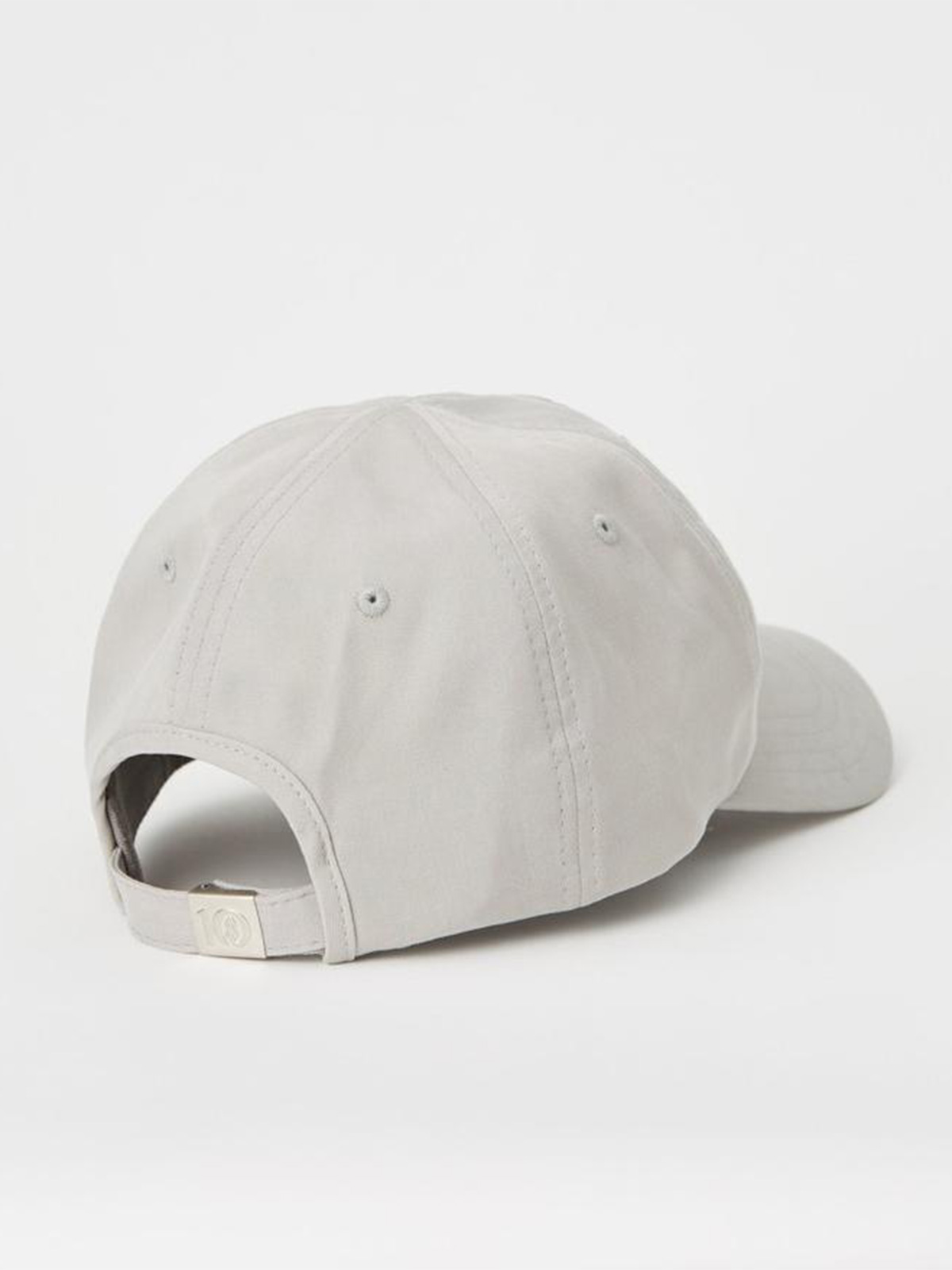Clothing laundry tags can be confusing at the best of times, but learning to decipher them is key in extending the life of your clothes and maintaining a more sustainable wardrobe. Here’s why good clothing care is also good for the planet, and how to go about it on laundry day.
Tackling textile waste in the laundry basket
What do landfills, charity collections, and the ports of Ghana have in common? We’ll tell you: it’s mountains of old, discarded clothes.
Every year, the world throws away around 92m tonnes of textile waste. Some old garments will simply go to the landfill, where, if they’re made with synthetics (like most are), they will likely stay for centuries, rotting chemicals into the earth. Others will be donated, and while this is preferable to the trash, the scale of donations given to charity shops and bins is often unmanageable, leading to many clothes getting sent overseas, to places like Ghana. The country’s capital, Accra, receives around 15m items of old clothing every week. It’s too much to manage, so guess where most of these clothes end up? Yep, we’re back to the landfill.
The seemingly loud-and-clear message from all of this is to stop throwing away clothes. But it’s not always that easy. What if a much-beloved garment has shrunk in the wash and no longer fits? Or you just can’t get that stubborn stain out? Or it has lost its shape? We’ve all been there. Paying attention to laundry care labels and washing clothes the right way won’t totally fix fashion’s colossal waste problems, but it might save you from grappling with the moral dilemma of throwing away clothing because of an avoidable laundry mistake.
While clothing tag laundry symbols may look a little bit confusing at first (what are all these tubs and squares and circles about?), when you know what they mean, all will become clear. Here, we’ve provided a breakdown of many of the most common symbols. But first, here’s a little more about why developing good laundry habits is a key part of nurturing a more sustainable wardrobe.
Why learning good clothing care is good for the planet
It might seem like a boring task (and we’re not here to argue that it’s super exciting), but learning to do the laundry properly is one of the best ways you can help your favourite clothes to last longer, keeping them out of the landfill and in your wardrobe where they belong.
“The average piece of clothing is only worn seven times before being thrown away,” says Lulu O’Connor, the founder and CEO of clothing care brand Clothes Doctor. “Often, this is simply because they’ve lost their shape, colour, or the appearance they once had. In many cases this is caused by being washed too often or the wrong way. A few simple changes to our laundry routine can really extend their life.”
In many cases, clothes are thrown away after being washed too often or the wrong way. A few simple changes to our laundry routine can really extend their life.
Lulu O’Connor – Clothes Doctor CEO
O’Connor notes that making simple changes, like following the care symbols instead of chucking it all into your washing machine and hoping for the best (of which we are all guilty) or using the right type of detergent for the fabric you’re using, can make a big difference. But it’s also important to know when to wash.
Is an item actually dirty or have you just worn it once? If it’s the latter, it might not actually need another turn in the washing machine. Instead, you could freshen it up by using a steamer, for example. “Steaming works for refreshing items between wearing,” says O’Connor. “It will kill odour and remove wrinkles, without you having to put your item through the wash. Our Blue Lilly and Bergamot Steamer Water, for example, beautifully scents your clothes during steaming.”
But don’t be afraid to just brush dirt off, either. This is advice not just followed by O’Connor, but also by some of the world’s most respected designers. In fact, Stella McCartney once told the Guardian that she simply allows dirt to dry and then brushes it off, and only washes clothes when they can’t go another day without it. “In life, rule of thumb,” she said, “if you don’t absolutely have to clean anything, don’t clean it.”
Should you always follow clothing care symbols to the letter?
When you can’t avoid the washing machine any longer, ignore clothing care labels at your peril, says Laura Mountford, laundry expert, content creator, and author of Live, Laugh, Laundry: A Calming Guide to Keeping Your Clothes Clean – And You Happy. “[The washing machine] can cause fabrics to shrink, bobble, and stretch, due to using the incorrect temperature or spin cycle,” she explains, adding that she has her own laundry chart framed by her washing machine to help her remember which symbol means what.
“You usually can’t go wrong if you follow the garment care instructions on the label, but it can be confusing to know what all of the symbols actually mean,” she says. “My book features a handy chart to decode the laundry symbols you might come across. I have this framed on the wall of my laundry room, as I thought it looked cute, as well as useful. I would advise keeping a note of the symbols to hand, by your washing machine for ease of use.”
But it’s important to note that sometimes, a little extra research is necessary—laundry care labels don’t always give the full picture. For example, they won’t tell you that if the t-shirt is blue, it should ideally be washed with other “cool” colours, like greens.
It is often overlooked to separate warm and cool tones from black items, putting all darks together, but this can lead to colour bleeding and fabrics losing their brightness.
Laura Mountford – laundry expert and author
“Most of us know that all fabrics should be separated by colour before washing,” Mountford notes. “But did you know that the most effective way to do this is whites, lights (neutrals), warms (reds, pinks, oranges), cools (blues, greens), and blacks? It is often overlooked to separate warm and cool tones from black items, putting all darks together, but this can lead to colour bleeding and fabrics losing their brightness.” If you’re not interested in spending precious time separating your clothes, however, you could opt to use colour catchers instead.
Another crucial laundry care tip from O’Connor is all about dry cleaning. Or, more specifically, a lack of dry cleaning. While many garments specify dry cleaning on the label, you can use a little of your own judgement here. “More often than not, items made from silk or wool are labelled as ‘dry clean only’ due to their delicate nature,” she explains. “But these delicate fabrics can in fact be washed just as (if not more) effectively at home with a gentle detergent.”
She adds that most synthetic fabrics, as well as cottons and linens, are durable enough to be popped in the washing machine with a gentle detergent and on a low temperature with no issues. But if the material is viscose, it’s wise to adhere to the dry cleaning symbol or risk damaging the clothing. “This type of rayon requires particular care,” she notes.
Your simple guide to reading clothing tags and laundry symbols
While it might be best to do your own research and use your own judgement in a handful of cases, on the whole, following clothing tags properly is going to do your wardrobe a world of good, helping your garments look new for much, much longer. So, for next time you load up the washing machine, here is a simple guide to the symbols you need to look out for and what they mean.
1. Bucket or tub filled with water

If the tag has a bucket (or tub) of water symbol, this means the item is safe for the washing machine. There may also be a temperature indicated on the bucket (30°C, for example, is a cold wash, 40°C is a warm wash, and 60°C is a hot wash), but, as well as numbers, the temperature could also be indicated with dots. The more dots in the bucket, the hotter the wash temperature should be. So if you just see one dot, this indicates the item should be washed on a cold temperature.
Sometimes the bucket will have a single line underneath it, which indicates you should select a synthetics cycle on the washing machine, while two lines means you should select a gentle cycle. If there is a hand in the bucket, you guessed it, this means it’s time for hand washing (no machine).
And finally, if you see a red bucket of water with a cross through it, do not use the washing machine at all for this particular garment. (You may also see a rolled up red tag with a cross through it, and this means you should avoid wringing out the garment.)
2. Triangle Symbols

Next up is triangle symbols, and these are particularly important because they indicate whether bleach can be used on a garment or not. Wool, for example, shouldn’t be bleached, and this is why you’ll see a red triangle with a cross through it on these garments, or any other fabric that’s too delicate for bleach. If you see an empty green triangle, however, it’s safe to use bleach. If it’s a green triangle with green lines, this means you should opt for a non-chlorine bleach.
3. Square symbols

Square symbols don’t actually refer to washing at all, but rather drying. If you see a green square with a green circle, then you’re clear to pop that item in the tumble dryer. If there are dots in the square, again, this indicates heat (one dot for low heat, three dots for high heat). One line underneath the square indicates a synthetic cycle, while two lines is for gentle cycles.
If you see a red square and circle with a cross through it, this means you should not put this item in the tumble dryer at all. It may be accompanied by other symbols, though. A square with three vertical lines is for drip drying, a square with one horizontal line in the middle is for flat drying, while a square with a curved line at the top means the item can be hung up to dry.
4. Ironing symbols

After washing and drying, the next step is often ironing. But, again, proceed with caution before you set up the board, as not all garments can be safely ironed. If you see a green iron with one dot in the centre, this means you should select a cool setting. Two dots is for a medium heat setting, and three dots means the item can be ironed on a high heat. A red iron with a cross through the middle means do not iron, while a red iron with a cross underneath means the item cannot be steamed.
5. Dry cleaning symbols

And finally, if you are thinking about heading to the dry cleaner, there are also symbols to follow. Your dry cleaner will know what each of these mean, but it’s also helpful for you to understand what your item needs and if it’s even safe to be dry cleaned in the first place.
Green circles mean the item can be dry cleaned, while different letters inside the circle indicate the type of solvent that can be used (P, for example, means any solvent except Trichloroethylene). Lines on the outside of the circle indicate things like cycle length, heat, moisture, and whether the item can be steamed. And finally, if you see a red circle with a red cross, don’t take it to the dry cleaner at all.



















